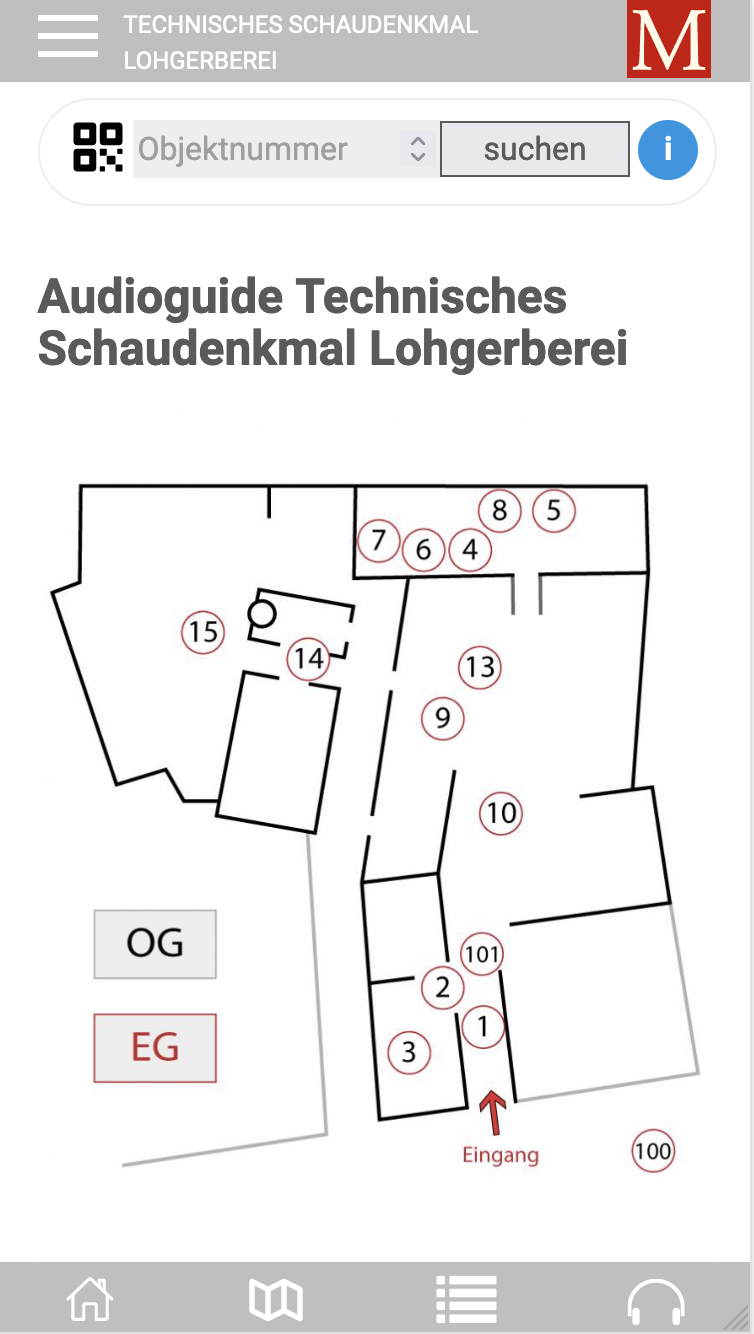Im heutigen digitalen Zeitalter stehen Museen und kulturelle Institutionen vor der Herausforderung, Besucher zu begeistern und komplexe Informationen auf ansprechende und interaktive Weise zu vermitteln. Eine effektive Lösung ist der Einsatz von Multimediaguides, die Besuchern jeden Alters ein dynamisches und immersives Erlebnis bieten. In diesem Artikel werden wir die Vorteile und Möglichkeiten von Multimediaguides für Museen und kulturelle Institutionen erkunden. Die Bedeutung des Geschichtenerzählens: Museen und kulturelle Institutionen sind Schatzkammern voller Geschichten, die darauf warten, erzählt zu werden. Von antiken Artefakten bis hin zu zeitgenössischer Kunst birgt jedes Exponat eine einzigartige Erzählung, die Neugier, Faszination und sogar emotionale Verbundenheit wecken kann. Traditionelle Ausstellungsetiketten und Audioguides reichen jedoch oft nicht aus, um die Fülle und Komplexität dieser Geschichten zu vermitteln. Multimediaguides hingegen bieten ein mächtiges Werkzeug für das Geschichtenerzählen und ermöglichen es den Besuchern, sich intensiver mit den Exponaten auseinanderzusetzen.
Interaktive und immersive Erlebnisse
Multimediaguides können viele Formen annehmen, von mobilen Apps über interaktive Kioske, Virtual-Reality-Erlebnisse bis hin zu Augmented-Reality-Installationen. Diese Formate ermöglichen es den Besuchern, sich auf dynamischere und partizipativere Weise mit den Exponaten zu beschäftigen, wodurch ein Gefühl der Eigenverantwortung und Verbundenheit mit den Inhalten entsteht. Beispielsweise könnte ein Multimediaguide: - Interaktive Spiele und Quizze anbieten, die die Besucher dazu ermutigen, die Exponate auf spielerische und ansprechende Weise zu erkunden - 360-Grad-Ansichten von Artefakten bereitstellen, sodass Besucher diese aus verschiedenen Blickwinkeln betrachten können - Virtual Reality nutzen, um Besucher in historische oder kulturelle Kontexte zu versetzen und ihr Verständnis und ihre Empathie zu vertiefen - Multimediale Inhalte wie Videos, Bilder und Audioerzählungen einbinden, um ein reichhaltigeres und immersiveres Erlebnis zu bieten
Vorteile für Museen und kulturelle Institutionen
Die Implementierung von Multimediaguides kann erhebliche Auswirkungen auf das Besuchererlebnis sowie auf die Betriebs- und Marketingstrategien von Museen und kulturellen Institutionen haben. Zu den Vorteilen gehören: - Erhöhte Besucherbindung und -zufriedenheit - Verbesserte Zugänglichkeit und Inklusivität für Besucher mit Behinderungen - Verbesserte Bildungsergebnisse und Lernretention - Erhöhte Einnahmen durch Sponsoring- und Werbemöglichkeiten - Verbesserte Datenerfassung und -analyse für Marketing- und Programmierungsentscheidungen
Herausforderungen und Chancen
Obwohl Multimediaguides viele Vorteile bieten, kann ihre Implementierung auch Herausforderungen mit sich bringen, wie zum Beispiel: - Integration in bestehendes Ausstellungsdesign und Infrastruktur - Entwicklungs- und Wartungskosten - Sicherstellung der Zugänglichkeit und Inklusivität für alle Besucher - Balance zwischen digitalem Engagement und physischer Ausstellung Trotz dieser Herausforderungen bieten Multimediaguides eine einzigartige Gelegenheit für Museen und kulturelle Institutionen, zu innovieren, sich anzupassen und in einer sich schnell verändernden Kulturlandschaft zu gedeihen.
Was ist ein Mediaguide?
Ein Audioguide/Multimediaguide ist ein Geräte oder eine Smartphone-App bzw. Web-App, die Ton- und Bildinhalte abspielt. Sie sind als Zusatzangebot zu den Exponaten konzipiert und sollen die Besucher befähigen, eigenständig durch die Ausstellung zu gehen.
Neben Hörstationen, Infotafeln oder Displays an den Ausstellungsstücken, werden auch separate Geräte zum Leihen oder kostenlose und kostenpflichtige Apps auf den Endgeräte der Besucher, oder als Web-App angeboten.
Zahlreiche Museen bieten ihre Museumsführer für die interessierten Besucher über museum.de an. Mit einem Smartphone können unsere Audioguide-Touren durch das Museum unkompliziert benutzt werden. Manche Audioguides bieten eine Übersichtskarte oder listen die Stationen in einer empfohlenen Reihenfolge auf. Alle Stationen, die mit einem QR-Code versehen sind, können direkt über das Smartphone aufgerufen werden.

Fazit zu Mediaguides
Zusammenfassend lässt sich sagen, dass Multimediaguides das Potenzial haben, die Art und Weise, wie Besucher mit Museen und kulturellen Institutionen interagieren, zu revolutionieren. Durch die Nutzung der Kraft des Geschichtenerzählens, interaktiver Erlebnisse und immersiver Technologien können diese Guides unvergessliche Erlebnisse schaffen, die inspirieren, bilden und unterhalten. Während sich Institutionen weiterhin an die Bedürfnisse ihrer Besucher anpassen und weiterentwickeln, sind die Möglichkeiten für Multimediaguides endlos.
Unser Angebot
Sprechen Sie uns an und lassen uns gemeinsam den optimalen Mediaguide für Ihre Ausstellung schaffen. Wir beraten, projektieren und realisieren Mediaguides seit über zehn Jahren. Profitieren Sie von unserem langjährigen Know-How. Wir arbeiten mit promovierten Germanisten, vilefältigen Profi-Sprechern und namhaften Tonstudios zusammen.
Kontaktieren Sie uns formlos unter contact@museum.de oder +49 (0) 28 01-9 88 20 72
 Wo finde ich die kostenlosen Premium Mediaguides?
Wo finde ich die kostenlosen Premium Mediaguides?
Natürlich hier auf https://www.museum.de/audioguides. Oder versuchen Sie den Audioguide des Monats, den man auf der Startseite findet.
Mit der Akustischen Reise durch die Museumswelt geben wir einen Überblick über interessante Kultureinrichtung in Deutschland, Östereich und der Schweiz. Hören Sie auch hier einmal rein. Oder fragen Sie einfach in Ihrem Museum nach einem Audioguide von museum.de.

